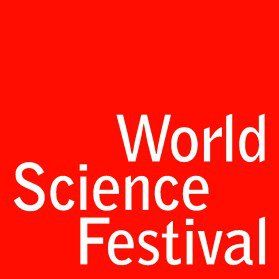World Science Festival: Day 3
Jun0

The 2010 World Science Festival Runs in New York City from June 2-6.
ScriptPhD.com’s coverage of the World Science Festival in New York City continues towards the physics and mathematics realm. Day 3 events on Friday included an intimate discussion about astrophysics and the new James Webb Telescope, set to replace Hubble in June of 2014, a panel about hearing and visualizing gravity with Albert Einstein’s modern successors, and a panel about the very limits of our understanding of science—the line between what we do and don’t (or can’t) know—and its bridge to culture and art. Contributions to our coverage were done by New York City science writers Jessica Stuart and Emily Elert. Synopses and pictures of three extraordinary panels with the premier scientists of our time under the “continue reading” cut.
REVIEW: Hubble IMAX—Editor’s Selection
Mar1

Hubble 3D IMAX poster ©2010 Warner Brothers Pictures, all rights reserved.
The Hubble Space Telescope is the world’s first observatory that actually orbits—you guessed it—through outer space. Over the last decade, Hubble has captured some of the deepest and most detailed images of our universe. All those recent headlines about exoplanets: those discoveries come from Hubble. Scientists viewing pictures of light projected from stars over 13 billion years ago (almost at the origin of the universe): that’s Hubble, too. Hubble 3D documents the 2009 mission by the crew of the Shuttle Atlantis to make vital repairs to one of mankind’s most expensive, and significant, science projects. There would be no second chances. If the mission had failed, Hubble would be just another piece of junk orbiting above the earth, like my Direct TV satellite and Elvis’s body. The tension is real, the suspense extraordinary, and the imagery? Out of this world. And fortunately for terrestrial audiences, the entire mission was captured by the crew and director Toni Myers on some of the most breathtaking, brave film ever recorded. We are proud to make Hubble 3D an official ScriptPhD.com Editor’s Selection.
From the Lab: Dark Energy 101 with Pluto’s “Slayer”
Sep1
It’s not often that world-renowned scientists crash in the heart of Hollywood to talk about Nobel Prize-winning physics research. But on a recent summer night, the ScriptPhD, along with a handful of lucky astronomy aficionados, was treated to a light show with a side of general relativity. At LA’s famed Laserium CyberTheatre, Yale physicist Charles Baltay, also known as the man responsible for Pluto’s demise, captivated a delighted audience with about 10 billion years of physics, starting from the Big Bang to Pluto’s demise. Continuing the physics theme was a visually stunning array of laser pyrotechnics set to the thematically appropriate tune of Pink Floyd’s “Dark Side of the Moon.” For Dr. Baltay’s lecture, entitled “Exploring the Dark Side of the Universe”, and the psychedelic imagery of the world’s most advanced laser light show, please “continue reading” under the jump.

















